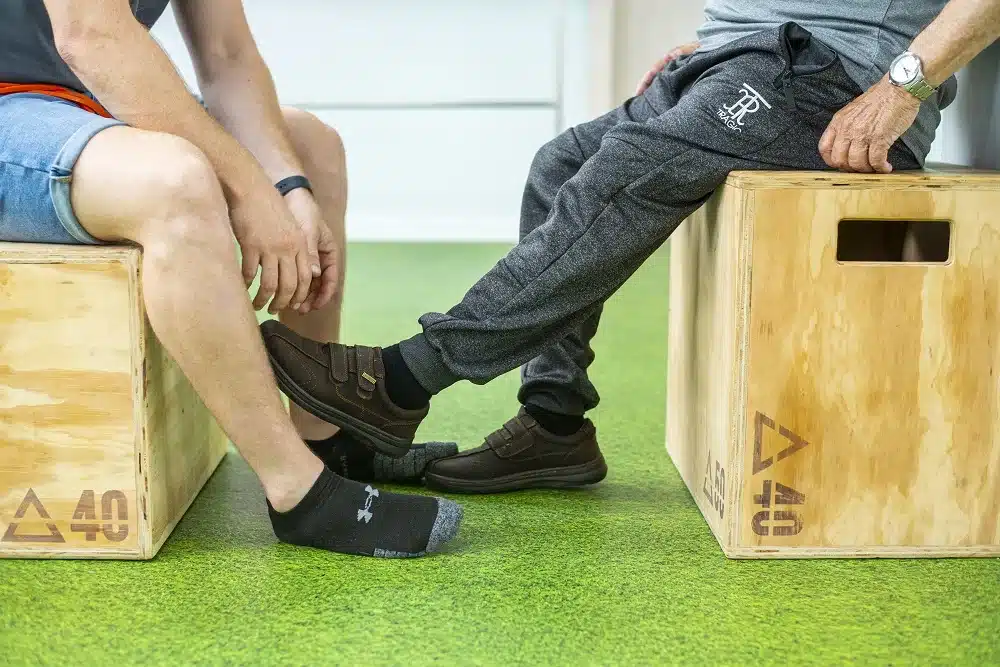Parkinson’s is a disease that affects a large number of people around the world. If you are here, you are probably looking for answers about the causes, symptoms and treatment of Parkinson’s disease.
In this article, we are going to explore this disease in detail, as well as the key role that neurorehabilitation plays in addressing this movement disorder. Let’s dive into the world of Parkinson’s!
What is Parkinson’s disease?
Parkinson’s, also known as Parkinson’s disease, is a chronic neurological disorder affecting the central nervous system.
It is a progressive disease characterised by the degeneration of nerve cells in a region of the brain called the substantia nigra.
This degeneration causes a decrease in the production of dopamine, a neurotransmitter crucial for the control of muscle movements.
Causes of Parkinson’s
The exact causes of Parkinson’s are not yet fully understood, but it is believed that a combination of genetic and environmental factors play an important role. Some risk factors include:
Genetics: If you have a family history of Parkinson’s, you may have an increased risk of developing the disease.
Age: Parkinson’s is more common in older people, usually in their 60s and older.
Exposure to toxins: Some studies suggest that exposure to certain environmental toxins may increase the risk of developing the disease.
In addition to the primary causes, there are some medical conditions and disorders that can cause Parkinson’s-like symptoms, such as side effects of certain medications.
Therefore, an accurate diagnosis is essential to ensure proper treatment.
Symptoms of Parkinson’s
Symptoms of Parkinson’s can vary from person to person, but some of the most common symptoms include:
Tremors: Involuntary, rhythmic movements of the hands, arms or legs.
Bradykinesia: Slowness of voluntary movements.
Muscle stiffness: Feeling of stiffness or tightness in the muscles.
Balance and coordination problems: Difficulty in maintaining balance and coordinating movements.
Changes in handwriting: Smaller and more difficult to read handwriting.
Voice changes: Softer, monotone voice.
Cognitive problems: Difficulty in concentration and memory.
Treatment of Parkinson’s disease
Parkinson’s treatment aims to alleviate symptoms and improve the quality of life of patients. Although there is no definitive cure, there are several options available:
Medications: Medications that increase dopamine levels in the brain are the mainstay of treatment.
Physical and occupational therapy: Neurorehabilitation plays a key role in the management of motor and functional symptoms.
Surgery: In severe cases, surgery may be an option to improve symptoms.
Healthy lifestyle: Maintaining a balanced diet and regular exercise can help control symptoms and improve quality of life.
The Importance of Neurorehabilitation in Parkinson’s disease
Neurorehabilitation is an essential component of Parkinson’s treatment. Through specific therapies and adapted exercises, patients can improve their mobility, coordination and quality of life.
Neurorehabilitation therapists work closely with patients to design personalised rehabilitation programmes that address their individual needs.
Neurorehabilitation focuses on:
Mobility exercises: Help maintain and improve mobility and muscle strength.
Speech and voice therapy: Helps to address voice changes and communication difficulties.
Cognitive stimulation: Improves concentration, memory and other cognitive functions.
Occupational therapy: Helps patients maintain independence in daily activities.
Conclusion
Parkinson’s is a disease that profoundly affects the lives of those who suffer from it, but with the right treatment and the help of neurorehabilitation, it is possible to improve quality of life and slow the progression of the disease.
If you or a loved one is facing the challenge of Parkinson’s, you are not alone. Seek the right care and discover how neurorehabilitation can make a difference on your path to a healthier, more active life – there is hope and help available for you!
In summary, Parkinson’s is a complex disease, but with the right approach, its symptoms can be addressed and quality of life improved.
Neurorehabilitation plays a key role in this process, providing patients with the tools and support they need to meet this challenge.
Remember to always consult a healthcare professional for accurate diagnosis and treatment.
Neurorehabilitation focuses on:
Mobility exercises: Help maintain and improve mobility and muscle strength.
Speech and voice therapy: Helps to address voice changes and communication difficulties.
Cognitive stimulation: Improves concentration, memory and other cognitive functions.
Occupational therapy: Helps patients maintain independence in daily activities.
Leave us your data to start your treatment







